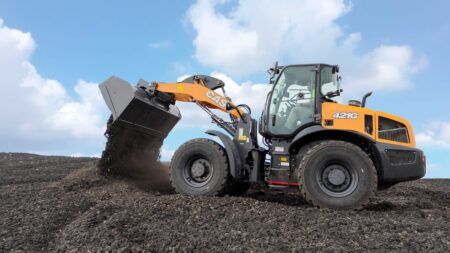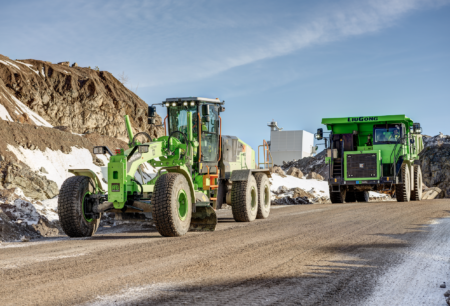While the legislation is not yet set in stone, the next/final (delete as appropriate) tier of European emissions compliance was a hot topic in Paris, with several suppliers promoting ‘Stage V-ready’ models and Cummins hosting a seminar to explain its finer points to the assembled press pack.
Richard Payne, Cummins’ off-highway regulatory affairs director, Europe, began by outlining that many EU states face legal action over their air quality, which is driving demand for the near-elimination of PM emissions from diesel engines. The PM problem from construction equipment in cities is increasing, especially from relatively small machines, which is why the COM (2014) 581 proposal for a Stage V will also affect the previously unregulated 0-19kW and over-560kW sectors, regardless of the type of fuel used, bringing them broadly in line with North American requirements. The proposed timeline for engine production will be January 1, 2019 for the 0-55kW and over-130kW segments, followed by the 56-129kW segment a year later.
The new legislation will require a reduction in PM mass, from the current Stage IV limit of 0.025 g/kW-hr to 0.015g/kW-hr but more crucially, a maximum PM count of 10¹² /kW-hr will be implemented, effectively eliminating 99.9% of particles in the 23nm to 2.5µm range. The 0-19kW and over 560kW sectors will be required to meet limits of 0.4 PM/7.5 NOx and 0.045 PM/3.5 NOx respectively.
“The rules don’t specify that a filter is required but this is the only way to enable particle counting compliance,” Payne explained.
Further complications include the abolition of the existing ‘flex’ arrangement, and that of a transitional ‘sell off’ for instance, the length of time an engine can be held before it is installed and the machine placed on the market. This will require a 12-month engine transition, and 18 months for equipment transition.
Given that Payne spends an enormous amount of time talking with the legislators in Brussels, iVT therefore asked what he would most like to see changed in the current proposals.
“The engine industry is generally happy with the proposals from the overall view of the levels and dates,” he responded. “The major concern is the removal of replacement engine options; from the Cummins point of view, that affects our reconditioning business if those engines get new identities, and from the owner/operator’s point of view, it could have severe consequences if they have to buy a new engine.
“For example, take a [broken-down] combine harvester in the middle of the season they don’t want to have to rebuild that engine, but rip it out and put a new one in.”
The Committee for European Construction Equipment (CECE) press conference carried on along these lines, with CECE president Eric Lepine pointing out that the construction equipment industry already produces the cleanest and safest machinery in the world and is committed to further support the legislator in this field but in order to do that, the industry needs the support of the legislator.
“We need the regulation to be approved by the end of 2015, otherwise our industry will not have the time to implement all the necessary changes in the engine and the machines to comply to these new very stringent emissions standards,” he said.
An appropriate replacement engines provision should be inserted in the new legislation, he reiterated. Furthermore, CECE is requesting the legislation’s transition period to be extended by six months.
And finally, with an estimated 75% of the world only at Stage IIIA levels and below, Lepine called for global alignment, saying that as the global market for highly regulated products is still quite small, Europe cannot afford to deviate too much from requirements in other ambitious nations in this field. He therefore urged the EU to maintain alignment in standards and limits with other regions, notably with the US, and actively promote worldwide alignment.
May 8, 2015




